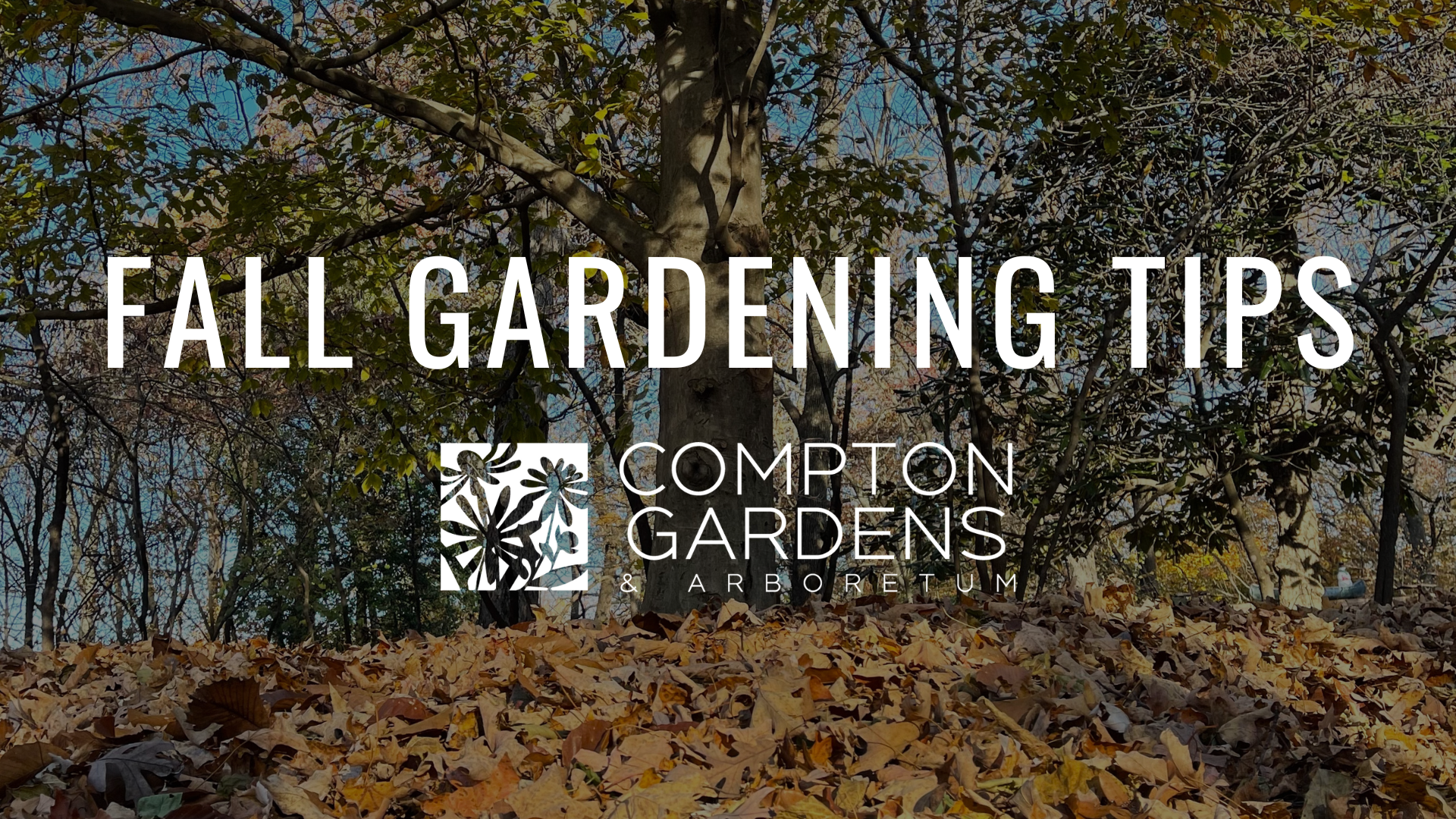
Fall is harvest season: the time of year that we begin picking all that remains from the soil and bringing it to the kitchen to be eaten or preserved for the long winter ahead. The flowers of summer wither away and tree leaves drift into piles on the earth. Although the environment gets sleepy in the fall, there is still work left to be done by gardeners. Here are 5 fall gardening tips from Meagan, horticulturist and site manager at Compton Gardens & Arboretum.

Tip 1: Compost your leaves instead of throwing them away. Leaves are great insulators for plants that might be more susceptible to long term cold exposure.

Tip 2: Mow your fallen leaves and use them as mulch in the vegetable garden or landscape beds. Many beneficial insects will decay over winter in the leaves and help compost them.

Tip 3: Let your gardens rest and don’t cut back perennials, grasses, or groundcovers until the following May. Many beneficial insects and native bees hibernate in the plants or plant stems until spring. This is a big buzz topic right now among the gardening community.

Tip 4: Begin to think about trimming your trees in the late fall and throughout winter. During the fall, your tree’s internal systems begin to slow as it prepares to go dormant. Less sap oozes during a winter pruning, which decreases the number of pests that are looking for host trees.

Tip 5: Help our residential wildlife by leaving out clean water sources and healthy feed. Not all birds migrate and not all animals hibernate entirely throughout the winter.
Fun hibernation fact: Chipmunks will sleep for 2- or 3-days during winter, wake up eat and drink, then go back to sleep for a few days.







